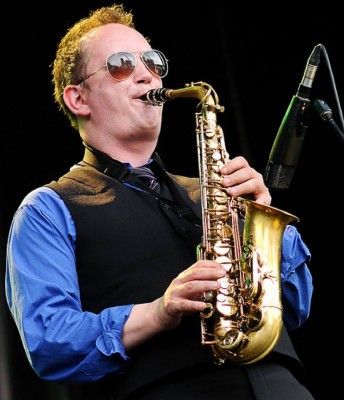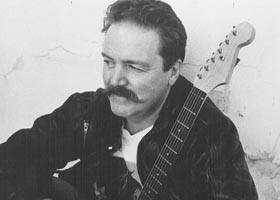Horns for Hope offers addicts musical salvation
Posted on May 3, 2014 By Mike Ross Culture, Entertainment, Faith, Front Slider, life, Life, Music
 It started as a joke about music education, whose context has since been forgotten: “Why don’t we just give musical instruments to homeless people and see what they can do?”
It started as a joke about music education, whose context has since been forgotten: “Why don’t we just give musical instruments to homeless people and see what they can do?”
Don Berner thought that was actually a pretty good idea, so the community-minded Edmonton saxophonist created Horns for Hope, a program where men in drug rehab at Hope Mission can perform in a real concert band. Right now they’re working on a rudimentary arrangement of “When the Saints Go Marching In.” It sounds like you’d expect it to sound. It sounds like a Grade 7 concert band, and there’s no sound quite like it – the joy of blowing one’s own horn for the first time mixed with glorious cacophony – but that’s not the point.
“It’s a positive activity,” Berner says. “It’s not doing drugs. It’s not living on the street. So right there it’s better than that. It develops different parts of the brain. You have to be perceptive to what’s going on around you, you have to be accountable to others, and you’re learning a new language, which involves a lot of focus. But as much as anything, playing music can be an addictive activity, which is a lot healthier than crystal meth or whatever the street drug of choice is. I remember one fellow commenting that the tuba is his new crack pipe.”
All the horns have been donated, along with the time of local music teachers helping out. They have about 20 trumpets, half a dozen trombones and baritones, a like number of clarinets and saxophones, a tuba, some percussion and one lonely French horn that doesn’t get used very much. No one picks the French horn in the junior high school concert band, either.
It’s hard to gauge the effectiveness of this or any of other recovery programs offered at the Hope Mission. The clients, whose identities are kept secret, sometimes get good at “telling you what you want to hear,” as Berner observes. From the point of view of Roland Rendell, program manager of Hope Mission’s Breakout Recovery Community, he notices how much the men look forward to the weekly rehearsals, run in two eight week sessions twice a year.
The idea that outsiders – strangers – are so willing to help is a morale boost, Rendell says.
“Even for the men to see people willing to take time out of their schedules to help them explore music, that in itself is huge,” he says. “I don’t know how many men I’ve heard say that they really wanted to try this. They light up like a Christmas tree when the sessions start up again. It’s very life giving.”

Music saved Gaye Delorme from a life of crime
Berner had lofty ideals when Horns for Hope started four years ago: “I thought maybe it’ll turn some guys around and give them something to do that will ultimately change their lives. I’ve since had to get more realistic expectations of that. At this time, it gives them something to do immediately. Maybe eight weeks from now they’ll be back on the street, maybe they’ll be doing crack again, I don’t know, but at least for this hour of this week, that’s something they can do that isn’t living on the street and having an addiction.”
There are famous cases where music has turned people’s lives around. Ask any rap star. And before the late Gaye DeLorme became a legend in Edmonton, he was saved from a life of crime when he learned to play guitar – while he was in jail.











